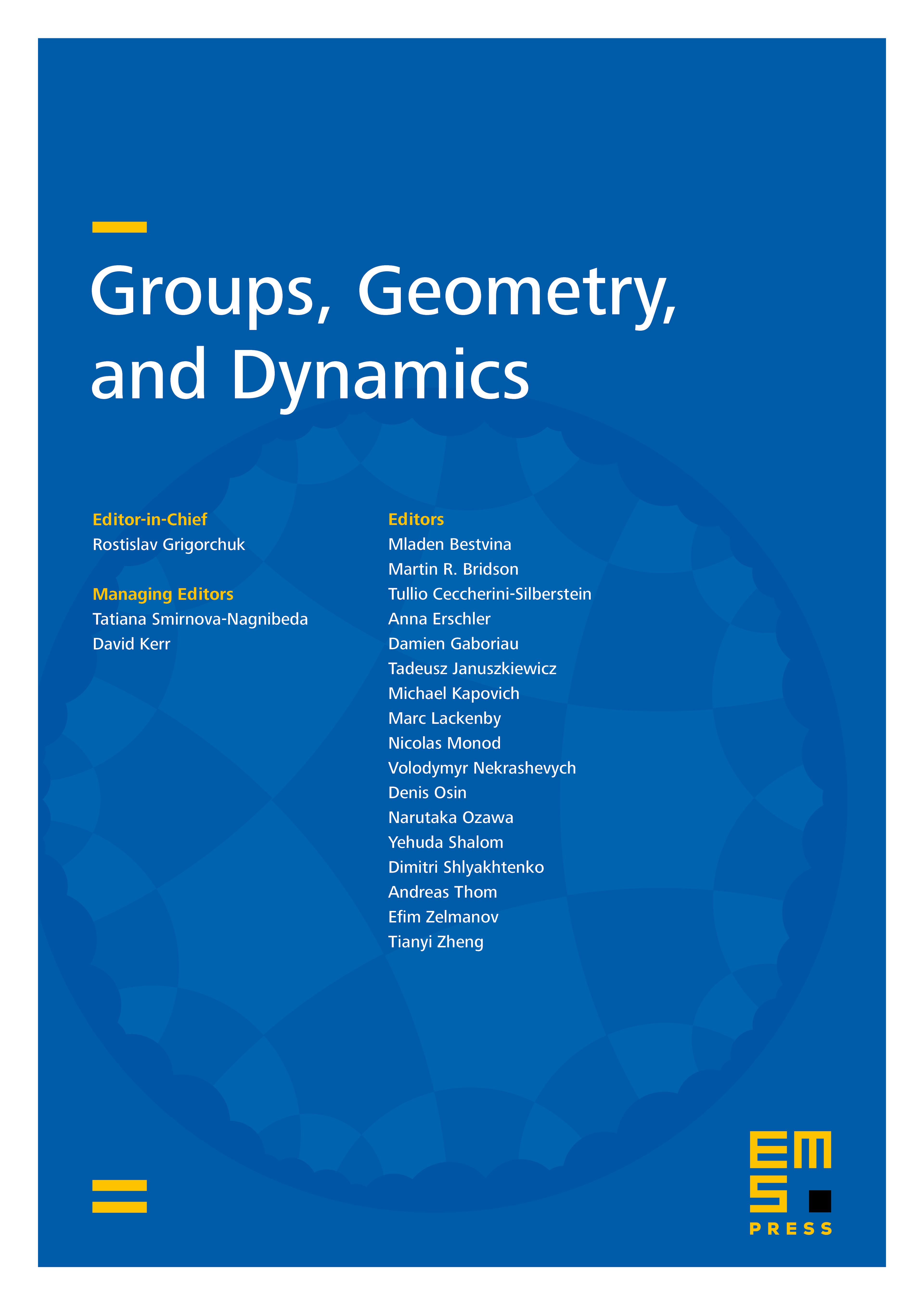Cantor dynamics of renormalizable groups
Steven Hurder
University of Illinois at Chicago, USAOlga Lukina
University of Vienna, AustriaWouter van Limbeek
University of Illinois at Chicago, USA

Abstract
A group is said to be “finitely non-co-Hopfian,” or “renormalizable,” if there exists a self-embedding whose image is a proper subgroup of finite index. Such a proper self-embedding is called a “renormalization for .” In this work, we associate a dynamical system to a renormalization of . The discriminant invariant of the associated Cantor dynamical system is a profinite group which is a measure of the asymmetries of the dynamical system. If is a finite group for some renormalization, we show that is virtually nilpotent, where is the kernel of the action map. We introduce the notion of a (virtually) renormalizable Cantor action, and show that the action associated to a renormalizable group is virtually renormalizable. We study the properties of virtually renormalizable Cantor actions, and show that virtual renormalizability is an invariant of continuous orbit equivalence. Moreover, the discriminant invariant of a renormalizable Cantor action is an invariant of continuous orbit equivalence. Finally, the notion of a renormalizable Cantor action is related to the notion of a self-replicating group of automorphisms of a rooted tree.
Cite this article
Steven Hurder, Olga Lukina, Wouter van Limbeek, Cantor dynamics of renormalizable groups. Groups Geom. Dyn. 15 (2021), no. 4, pp. 1449–1487
DOI 10.4171/GGD/636